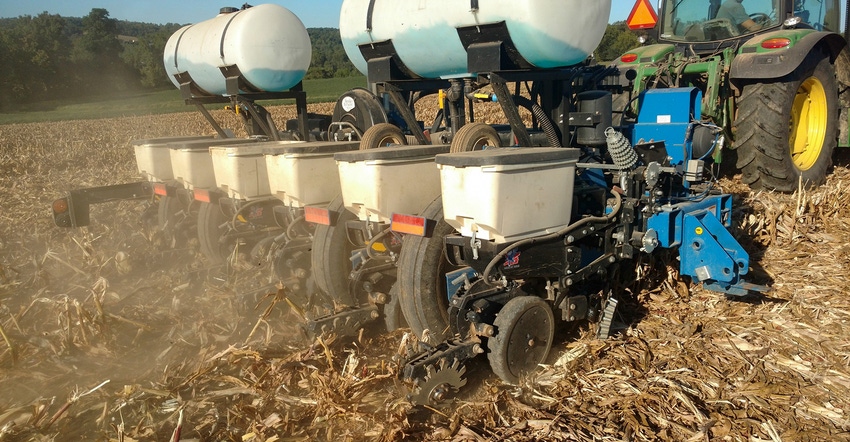May 31, 2019

Deciding on the seeding rate for your cover crops is an important part of your process; don’t just rely on a generic number you heard somewhere!
A little knowledge can go a long way and will reward you a better return on your cover crop investment.
Check germination
This seems simple, but it’s something that’s overlooked by a lot of farmers: What is the labeled germination rate of your seed?
There’s a big difference in planning if you’re looking at a seed that germinates at 80% vs one that will do 95%. Figure out pounds of “live seed” per acre to get the desired amount. Better yet, you can test this out yourself: Take 100 seeds, wrap them in a damp paper towel and seal them in a Ziploc bag. After five days you should be able to get a pretty good idea of what the actual germination rate will be.
Another variable with some seed types is that they can have hard seeds that are viable but won’t germinate for one or even three years later. Hairy vetch is a prime example of this, where typically 3% to 5% is listed as “hard seed.”
Use a precision planter
Precision planters take even more of the guesswork out of your seeding rate. In fact, if you’re using one the right way, you might be able to cut your seeding rates in half.
Many cover crop seeds can work with common plate sizes, and there are even some new plates that can handle mixes for vacuum planters. The control you have over seeding rate and planting depth is a huge advantage, particularly with reduced seed costs.
Know the genetics
It’s important to know the genetics of your cover crop — the specific characteristics of a particular species and variety, and what they mean for how you use it.
For example, I’ve used an annual ryegrass that had three times the tillers of other varieties, which meant I could effectively reduce the amount of seed I planted but get the same biomass. It’s worth talking to your seed supplier in order to fine-tune your seeding rate and other factors.
Another factor is how well your seeds hold their germination rate. This can vary depending on the species. Stored well, crops such as radish and hairy vetch might last for years, or even increase their rate after a few years. On the other hand, peas and other legumes drop off quickly after the first year.
Adjust your seeding rate to match your goals
Your seeding rate is not a fixed number; it should change based on what you’re trying to do.
If the goal is weed suppression, then a higher seeding rate is desired in order to shade out the weeds. If you’re looking to scavenge nitrogen, you might use radishes at a lower rate since they can spread out to effectively take up nitrogen. Or, if you want to add more nitrogen, seed legumes at a higher rate.
These are only a few examples, but you get the idea.
Another important variable is time. Planting earlier in the fall, for instance, will need a lower seeding rate than if you plant closer to cold weather.
Understand the synergy of cover crop mixes
Each cover crop can be useful on its own. Using them in conjunction with other cover crops, though, can accomplish more. This takes some understanding of the varieties involved and plenty of experimentation, but the effect is such that you can even plan on using fewer pounds of seed per acre if you’re using a cover crop mix effectively.
Not to mention that you can tweak the ratios in the mix depending on what you’re using it for.
The Coach’s Closer
There’s a lot that goes into deciding your cover crop seeding rate, and a little planning can make a big difference in both trimming your costs and using your cover crops more effectively.
Groff is a cover crop pioneer and innovator who farms in the Chesapeake Bay Watershed. Check out his website, covercropcoaching.com.
About the Author(s)
You May Also Like




